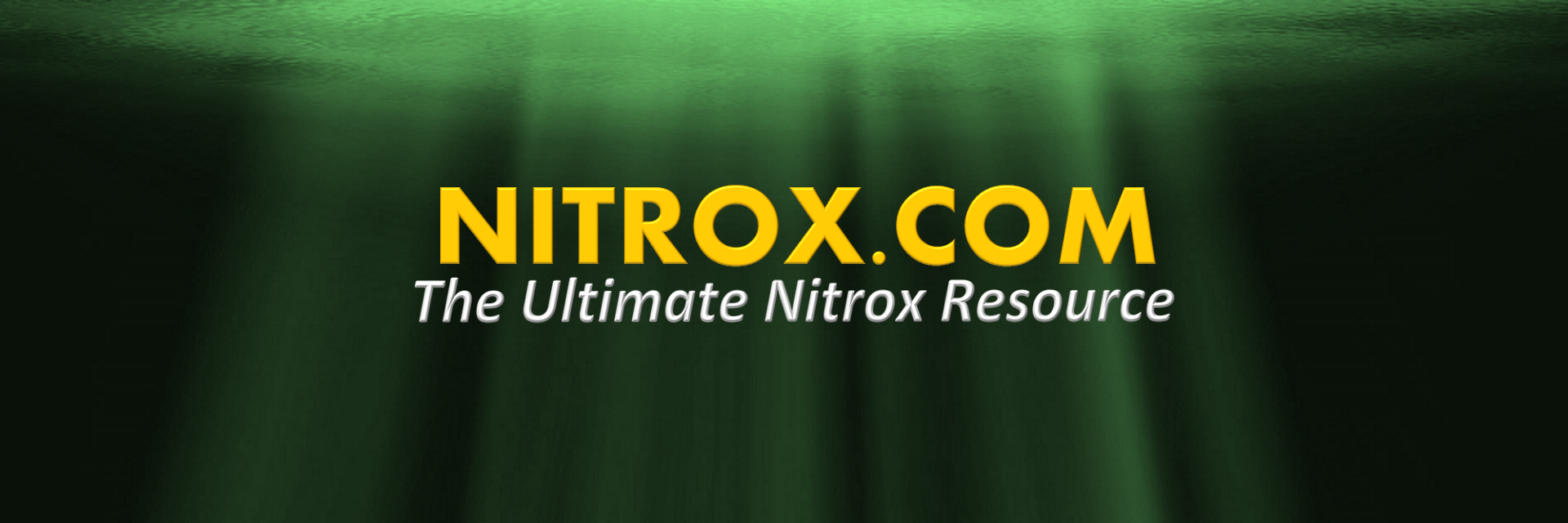General Nitrox Information
Nitrox refers to any gas mixture composed of nitrogen and oxygen (excluding trace gases); this includes normal air (“AIR”), which is approximately 78% nitrogen and 21% oxygen, with around 1% inert gases, primarily argon. However, in scuba diving, Nitrox is normally differentiated and handled differently from air. The most common use of Nitrox mixtures containing higher than normal levels of oxygen is in scuba, where the reduced percentage of nitrogen is advantageous in reducing nitrogen uptake in the body’s tissues and so extending the possible dive time and/or reducing the risk of decompression sickness (also known as the bends).
 The Number 1 benefit of using Nitrox is to safely extend your bottom time.
The Number 1 benefit of using Nitrox is to safely extend your bottom time.
Nitrox is mainly used in scuba diving to reduce the proportion of nitrogen in the breathing gas mixture. Reducing the proportion of nitrogen by increasing the proportion of oxygen reduces the risk of decompression sickness, allowing extended dive times without increasing the need for decompression stops. Nitrox is not a safer gas than compressed air in all respects. Although its use reduces the risk of decompression sickness, it increases the risk of oxygen toxicity.
It doesn’t matter which gas mix you use, if you dive to the limits, you will most likely injure yourself.
Breathing Nitrox is not thought to reduce the effects of narcosis, as oxygen seems to have equally narcotic properties under pressure as nitrogen, thus one should not expect a reduction in narcotic effects due only to the use of Nitrox. Nonetheless, there remains a body of the diving community that insists that they feel reduced narcotic effects at depths breathing Nitrox. This most likely is a placebo effect and may be due to a dissociation of the subjective and behavioral effects of narcosis. However, it should be noted that because of risks associated with oxygen toxicity, divers tend to not utilize Nitrox at greater depths where more pronounced narcosis symptoms are more likely to occur.
It is a common myth that Nitrox is associated with deep or technical diving.
There is anecdotal evidence that the use of Nitrox reduces post-dive fatigue, particularly in older and/or obese divers. This is known as an “O2 Buzz.” While many divers swear it to be true, there is no evidence to prove the myth. But, if it makes you feel better, who are we to say it doesn’t work.
Nitrox has many names!
Nitrox is known by many names: Enriched Air Nitrox, Oxygen Enriched Air, Nitrox, EANx, or Safe Air. The name “Nitrox” may be capitalized when referring to specific mixtures such as Nitrox68, which contains 68% nitrogen and 32% oxygen. When one figure is stated, it refers to the nitrogen percentage, not the oxygen percentage. The original convention, Nitrox 68/32, became shortened, as the second figure is redundant.
Although “Nitrox” usually refers to a mixture of nitrogen and oxygen with more than 21% oxygen, it can refer to mixtures that are leaner in oxygen than air. “Enriched Air Nitrox,” “Enriched Air” or “EAN” are used to emphasize richer than air mixtures. In “EANx”, the “x” indicates the percentage of oxygen in the mix and is replaced by a number when the percentage is known; for example a 40% EANx mix is called EAN40. The two most popular blends are EAN32 and EAN36 (also named Nitrox I and Nitrox II, respectively, or Nitrox 68/32 and Nitrox 64/36).
In its early days of introduction to non-technical divers, Nitrox has occasionally also been known by less complimentary terms, such as “devil gas” or “voodoo gas” (a term now sometimes used with pride).
Learn More About Nitrox – Click Here
